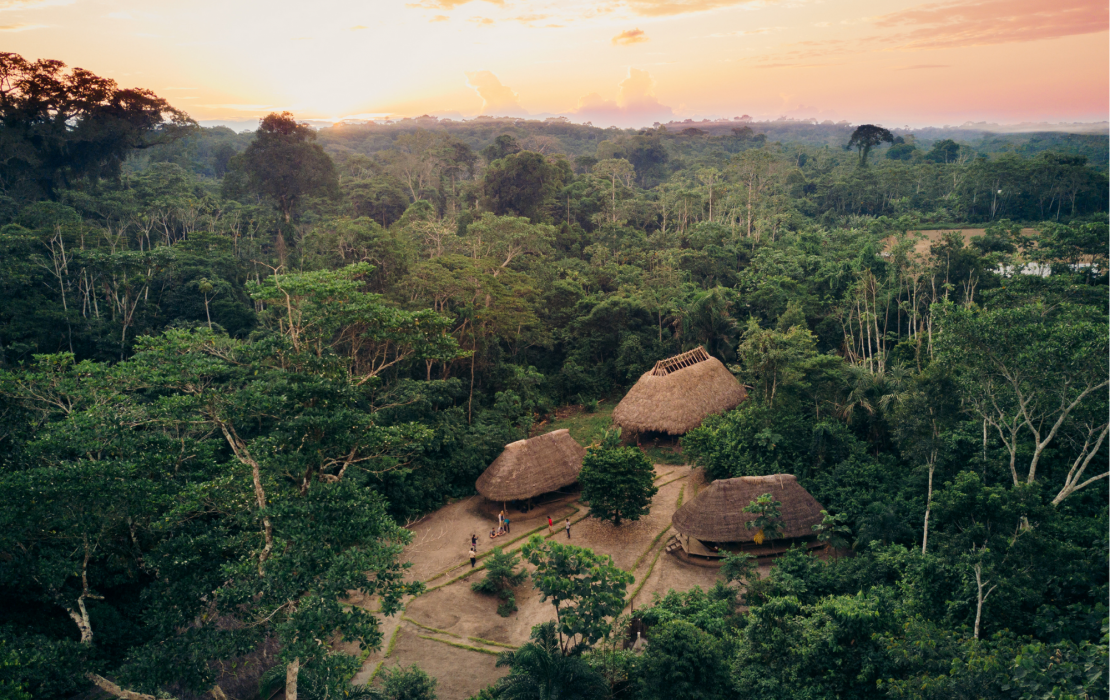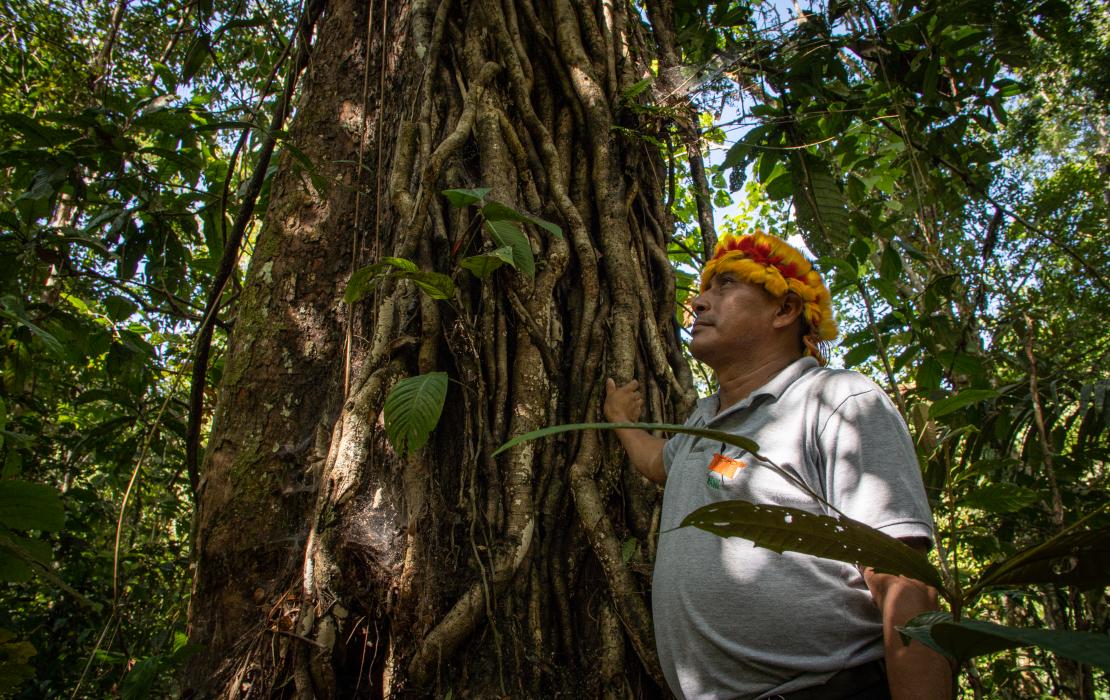
Photo credit: UNDP Costa Rica

Photo credit: UNDP Costa Rica
A shocking heatwave has gripped South America at the end of the winter season, with temperatures pushing past 40°C in several countries. On the border of Peru and Bolivia, Lake Titicaca, the largest lake in South America, is experiencing historically low water levels. Further south, Uruguay has declared a state of emergency as a multi-year drought threatens the country’s water reserves. Scientists are warning that the Amazon rainforest, one of the largest carbon sequestration pools, could become a net carbon source to the atmosphere if no action is taken.
The impacts of climate change are being felt everywhere, and the Latin America and the Caribbean (LAC) region is no exception. Year after year, the region experiences extreme weather events, such as heatwaves and storms, with severe consequences for lives and livelihoods, and significant economic costs. Heavy rains in central Chile have caused at least US$1 billion in economic losses this year alone. Mexico’s energy grid was heavily strained as temperatures soared to 45°C. And the Caribbean, the part of the region most impacted by extreme weather events, is predicted to face even more frequent and intense impacts, estimated to cause losses of $22 billion annually by 2050.
To limit the impacts of climate change, the world must drastically cut greenhouse gas emissions now and in the coming decades, while also increasing carbon removals and investing in efforts to adapt and become more resilient to these impacts. For that to happen, we need a lot more climate finance. It is now estimated that supporting a net-zero transition around the world will require $9.2 trillion.
Developed countries have pledged $100 billion per year to financially support developing countries in their climate action. While this support is essential, this pledge is only a small fraction of what is needed and, importantly, has not yet been fulfilled. However, support from developed countries is only one part of the equation. Developing countries are also relying on other sources of funding, such as domestic public and private sectors and the international private sector.
Countries in the LAC region are trying to secure the investments they need for climate action in the coming decades through a mix of finance instruments and approaches that include green finance, results-based payments for REDD+, carbon markets, finance for blue economy, biodiversity funds, and public finance planning.

Photo credit: UNDP Costa Rica

Photo credit: UNDP Colombia
Green finance
Chile was the first country in the Americas to issue a green sovereign bond in 2019. Since then, other countries have used this type of bond or similar financial instruments to fund their climate action.
In Belize, a debt-for-nature swap reduced the Caribbean country’s external debt by 10 percent of GDP and is channeling resources to protect the longest coral reef in the Western Hemisphere. Following the steps of this small Caribbean state, Ecuador completed in 2023 the largest-ever debt for nature swap, which will allow the country to allocate resources for conservation in the Galápagos Islands.
However, it’s not enough to just issue sovereign bonds. Transparency is key for ensuring such instruments remain trustworthy and efficient, and it is essential for countries to demonstrate robust reporting and budgeting mechanisms and real results. UNDP has contributed to strengthening Uruguay’s measurement, reporting, and verification (MRV) system, which helped the government successfully issue a sovereign bond in 2022. In Ecuador, a platform to track national climate finance that incorporates environmental spending tracking tools into the budget process is being established for the coming years.

Photo credit: UNDP Uruguay/Antartida Films
Results-based payments for REDD+
Nearly half of the land in LAC is covered by forests. Healthy forests can act as carbon sinks, absorbing carbon emissions from the atmosphere. Many countries with large tropical forests have made important progress in reducing emissions from deforestation and forest degradation (often through REDD+ activities).
Through the Green Climate Fund pilot program for REDD+, countries like Brazil, Costa Rica, and Ecuador have accessed climate finance worth $170 million for their successful results from REDD+ activities. Costa Rica and Ecuador are using the innovative Performance-based Payment modality, which provides funds upon the achievement of pre-agreed, measurable, and independently verified development results.
Costa Rica is using these funds, in part, to increase the accessibility of its Payment for Environmental Services Programme to women landholders and Indigenous Peoples’ communities. Ecuador is using the payments to deliver its REDD+ Action Plan, which has resulted in, among other achievements, the protection of 159,000 hectares of forest by ten rural Amazonian and Indigenous communities. Similarly, Brazil is investing most of its results-based payment in Floresta+, an innovative programme that provides incentives for environmental services to family farmers, traditional communities, and Indigenous Peoples in the Amazon region.

Photo credit: APEOSAE, Ecuador

Photo credit: UNDP Costa Rica
Carbon markets
Countries that have built national systems to both manage forests sustainably —leading to reduced forest emissions and enhancement of forest carbon sequestration — as well as monitor changes in forest cover and land use, are now assessing how to strategically engage in carbon markets as a source of finance to deliver their climate pledges. If designed in line with UNFCCC requirements and following high-integrity criteria, carbon markets can offer an important source of finance to developing countries.
Forest-rich countries are starting to strategically engage in carbon markets in the context of delivering their NDCs. Costa Rica is currently undergoing validation and verification of forest-based emission reductions with the objective to have verified credits issued through the Architecture for REDD+ Transactions (ART). UNDP has been supporting Costa Rica in the application of ART’s TREES standard for the quantification, monitoring, reporting, and verification of greenhouse gas emission reductions and removals from REDD+ activities at a jurisdictional and national scale.
Meanwhile, countries such as Peru are already pioneering the implementation of carbon market instruments developed through voluntary cooperation among countries. In 2020, the country signed the first bilateral agreement for cooperation in carbon markets under Article 6.2 of the Paris Agreement. This agreement with Switzerland set a standard for ensuring environmental integrity of international transfers of mitigation outcomes (ITMOs).

Photo credit: UNDP Peru/GEF-TICCA
Blue economy
The blue economy concept centres on the sustainable use of ocean resources for economic growth, jobs and social and financial inclusion, with a focus on the preservation and restoration of the health of ocean ecosystems and the services they provide.
The islands of Barbados, Grenada and Saint Vincent and the Grenadines are working to create financial frameworks and conditions that drive finance towards blue economy opportunities. UNDP is working in the region to provide technical support on how to better integrate marine and coastal components within national climate goals, focusing on the concepts of blue economy, blue carbon ecosystems, and nature-based solutions and their potential to increase climate ambition and tap into climate finance.

Photo credit: GEF SGP Bahamas

Photo credit: Turneffe Atoll Sustainability Association, Belize
Biodiversity funds
LAC is one of the most biodiverse regions on the planet. A recent report by the World Wildlife Fund shows that the region is suffering the highest decrease in biodiversity, with a decline registered in 94 percent of monitored wildlife populations.
Globally, it is estimated that $700 billion a year is needed to reverse the biodiversity crisis. The BIOFIN initiative, created by UNDP and the European Commission, is working with 40 countries worldwide to catalyze investments in nature.
In countries like Mexico and Argentina, BIOFIN is supporting governments, civil-society, vulnerable communities, and the private sector to find innovative finance solutions to protect nature and biodiversity, while unlocking economic opportunities. Finance solutions include a wide range of instruments, such as grants to fund biodiversity conservation activities, green bonds, insurance schemes to cover the costs of environmental disasters, fiscal measures, like green taxes or subsidies phase-out, and payments for ecosystem services.

Photo credit: UNDP Mexico

Photo credit: UNDP Costa Rica

Photo credit: UNDP SGP Argentina

Photo credit: Kapawi Ecolodge
Public finance planning
Budgeting tools for public investments and national climate finance strategies are key to identifying countries’ specific climate investment needs and gaps and to track government’s spending on climate. Having such data and information contributes to the evidence base for domestic public sector spending on climate and can help attract more climate finance.
Chile has been working on introducing climate budget tools into its fiscal and macroeconomic policy. This includes the revision and planning of public finance to achieve the 2050 net-zero targets and the evaluation of costs and financial requirements to achieve carbon neutrality in the Chilean energy sector.
Learning from the experiences of Chile, Argentina, Ecuador, El Salvador and Panama are reviewing and adjusting their public finance planning with the aim to increase the allocation of resources for climate projects and policies.

Photo credit: Adapta Clima, Chile
Securing the necessary investments and financial flows in the LAC region will require international support, as well as strengthening the capacities of governments and the private sector to mobilize funds. There is a demand for tools to measure and account for the financial flows needed, to identify where the gaps are, to create awareness among the public, and to build the capacity of governments, businesses, and citizens on climate finance.
By empowering governments to align their financial instruments with climate goals, UNDP is fostering an environment where sustainable finance becomes a significant driver of positive change in the region.

Photo credit: UNDP Peru

Photo credit: UNDP Ecuador/PROAmazonía
Editor's Note: If you enjoyed this piece, check out our explainer on climate finance.

